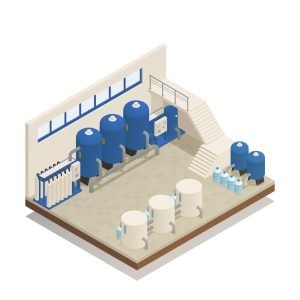A Comprehensive Guide to Effluent Treatment Plant Process

Learn about the process, benefits, and common questions related to Effluent Treatment Plants (ETPs) and Common Effluent Treatment Plants (CETPs).
Effluent Treatment Plants (ETPs) play a crucial role in maintaining environmental sustainability by treating industrial wastewater before it is discharged into water bodies. Here’s a detailed guide to understanding ETPs, their processes, and the benefits they offer.
What is an Effluent Treatment Plant (ETP)?
An Effluent Treatment Plant (ETP) is a system designed to treat industrial wastewater to remove contaminants and impurities before it is discharged into the environment. ETPs are essential for preventing pollution and maintaining ecological balance.
Effluent Treatment Plant Process
The process of an ETP involves several stages to ensure that the wastewater is treated effectively:
Screening: The wastewater is passed through screens to remove large objects and debris.
Primary Treatment: In this stage, the wastewater is settled to allow the separation of solids and liquids. The solids, known as sludge, settle at the bottom, while the clarified water moves on to the next stage.
Secondary Treatment: This stage involves biological treatment, where microorganisms break down organic matter in the wastewater. This process helps in further reducing the pollutant levels.
Tertiary Treatment: In the final stage, the water undergoes additional treatment to remove any remaining contaminants, ensuring that the treated water meets the required standards for discharge.
Benefits of Effluent Treatment Plants

Environmental Protection: ETPs help in reducing the environmental impact of industrial wastewater by treating it before discharge.
Compliance: ETPs ensure that industries comply with environmental regulations and standards regarding wastewater discharge.
Resource Recovery: Some ETPs are designed to recover valuable resources from wastewater, such as energy or reusable water.
Common Effluent Treatment Plant (CETP)
A Common Effluent Treatment Plant (CETP) is a centralized facility that treats wastewater from multiple sources, typically industries in an industrial estate or cluster. CETPs are cost-effective and help in reducing the environmental impact of industrial activities.
Conclusion
Effluent Treatment Plants (ETPs) and Common Effluent Treatment Plants (CETPs) are critical for maintaining environmental sustainability and ensuring that industrial wastewater is treated effectively.
By understanding the processes involved, the benefits they offer, and addressing common questions, industries can play a vital role in reducing pollution and protecting our environment. Industries need to invest in ETPs/CETPs and adhere to environmental regulations to create a cleaner and healthier future for all.
FAQs About Effluent Treatment Plants
1 What is the difference between ETP and CETP?
ETPs are individual treatment plants for single industries, while CETPs are shared facilities for multiple industries in a cluster.
2 How does an ETP work?
An ETP works by treating wastewater through various stages of physical, chemical, and biological processes to remove contaminants.
3 What are the key components of an ETP?
The key components of an ETP include screens, primary clarifiers, aeration tanks, secondary clarifiers, and tertiary treatment units.
4 How can industries ensure the effective operation of an ETP?
Industries can ensure the effective operation of an ETP by regular maintenance, monitoring, and compliance with environmental regulations.
5 What are the challenges faced in ETP operation?
Challenges in ETP operation include high operating costs, maintaining treatment efficiency, and meeting stringent discharge standards.



